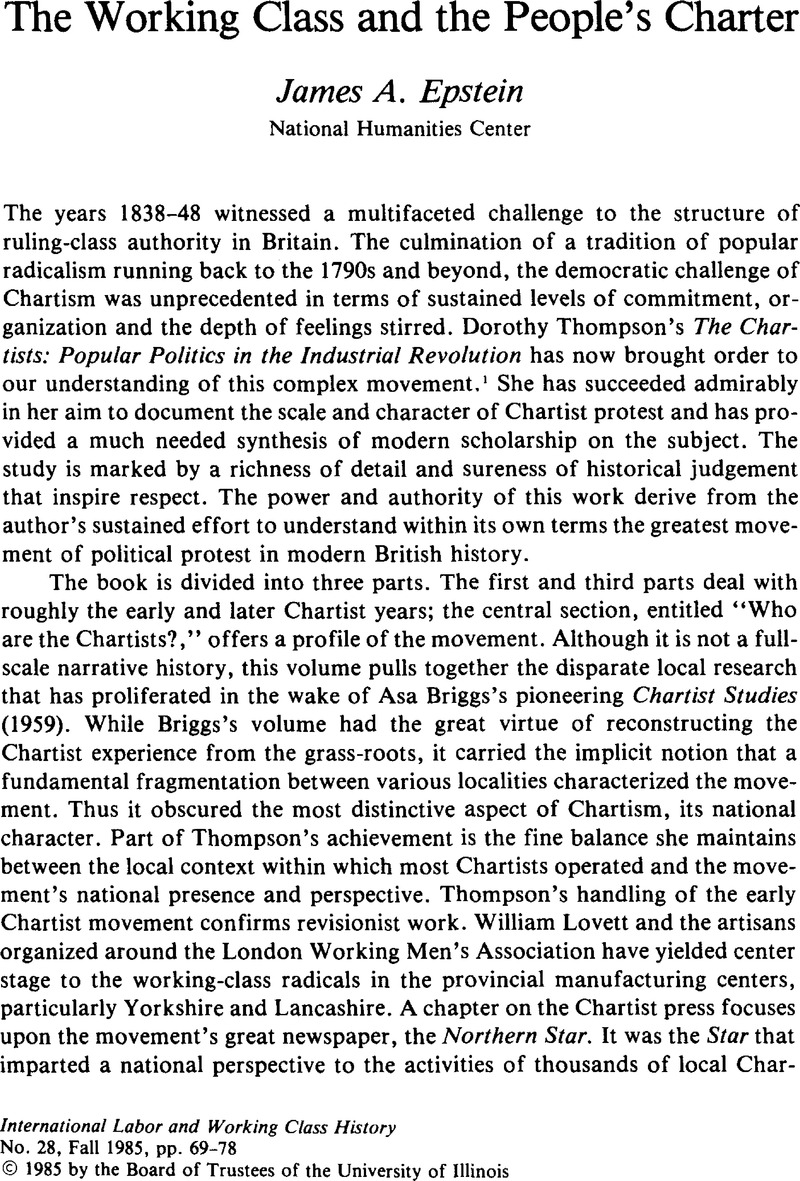No CrossRef data available.
Article contents
The Working Class and the People's Charter
Published online by Cambridge University Press: 16 December 2008
Abstract

- Type
- Review Essays
- Information
- Copyright
- Copyright © International Labor and Working-Class History, Inc. 1985
References
1. New York: Pantheon Books,1984,399 pp.
2. Jones, David J. V.The Last Rising (Oxford, 1985), 213.Google Scholar
3. “Women and Nineteenth-Century Radical Politics: A Lost Dimension,” in Mitchell, JulietOakley, Ann, eds., The Rights and Wrongs of Women (Harmondsworth, 1976).Google Scholar
4. Eve and the New Jerusalem: Socialism and Feminism in the Nineteenth Century (London, 1981).Google Scholar Also see Alexander, Sally, ““Women, Class and Sexual Difference”, History Workshop 17 (1984):125–49CrossRefGoogle Scholar; Jones, David J. V., “Women and Chartism”, History 222 (1983):1–21.CrossRefGoogle Scholar
5. In Jones, Gareth Stedman, Languages of Class (Cambridge, 1983), 104–05.Google Scholar For a critique of Stedman Jones's general approach, see Foster, John, ““The Declassing of Language”,” New Left Review 150 (1985):29–45Google Scholar; also “Rethinking the Categories of Working Class History,” forthcoming.
6. Prothero, I. J., “William Benbow and the Concept of the ‘General Strike,’” Past and Present 63 (1974):141–46.CrossRefGoogle Scholar
7. Cf. Wilentz, Sean, “Against Exceptionalism: Class and the American Labor Movement, 1790–1920”, International Labor and Working Class History 26 (1984): 1–24.CrossRefGoogle Scholar
8. See Belchem, John, “1848: Feargus O'Connor and the Collapse of the Mass Platform”, in Epstein, JamesThompson, Dorothy, eds., The Chartist Experience (London, 1982).Google Scholar


